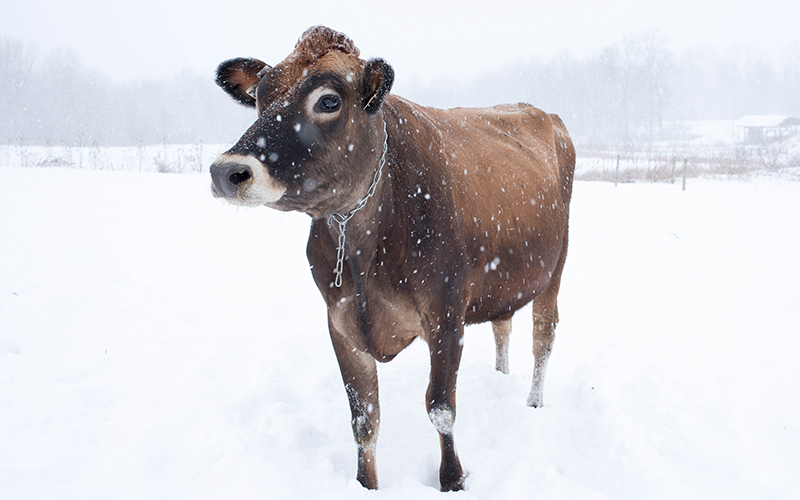November 27, 2022
The Levels of Dairy Risk Management

This blog was co-written by Crop Growers Northeast Marketing Agents, Daniele Ricci and Megan Clancy.
Dairy Risk Management can be an intimidating and complex process for many dairy operations; however, it is an important tool for protecting risk in dairy markets. Breaking it down into levels of protection can be an easier way to understand how to best protect your operation.
Level One: Dairy Margin Coverage (DMC)
DMC is a USDA Farm Service Agency (FSA) program for your first five million pounds of production. DMC protects against “the difference between the all-milk price and the average feed price (the margin) falling below a certain dollar amount selected by the producer.”
If you produce less than five million pounds, all your production is fully insured. If you produce more than five million pounds, your remaining pounds after five million are left uninsured. You select your coverage level when you enroll in the program, most enrolling in the $9.50 level. The premium for this program is less than $0.20/cwt. This program is a must for your risk management strategy. The cost is low, and the payouts historically have been consistent. This program is projected to pay in 2023.
Level Two: Dairy Revenue Protection (DRP)
DRP is considered the next level of risk management because it has a higher level of coverage and a higher premium. DRP is also a USDA run program, but it is run through your insurance provider. It is still USDA subsidized and the USDA Risk Management Agency (RMA) sets the premium. However, your insurance provider is the one paying out indemnities. DRP sets a quarterly price floor based on that endorsed day’s Chicago Mercantile Exchange (CME) pricing, leaving the upside of the market open.
You can endorse however many pounds of milk you want within a given quarter. There are five futures quarters available at a time. You can endorse with milk classes or components. The classes are III and IV and the components are protein, butterfat and nonfat solids. Classes can be blended or be split to endorse one class at a time. Components cannot be split; you endorse all three components together as a blended component price. You can select anywhere from 80% to 95% of that day’s CME price. If the price in that quarter falls below the endorsed price, your insurance provider will pay you an indemnity.
Crop Growers recommends endorsing several times for one quarter. Endorsing 20-30% of your milk production in that quarter each time allows you to get the most value. You cannot insure more milk than what you produce.
Level Three: Hedging and Forward Contracting
Hedging and forward contracting are other risk management strategies based on CME futures markets that are provided through brokers and cooperatives. These strategies allow producers to “lock in” future milk prices by month to reduce their risk in price volatility.
There are charges associated with the services provided by brokers and cooperatives. Hedging is provided through brokers, and futures contracts have a minimum size of 200,000 pounds. Depending on the size of the farm, this may not be the ideal risk management strategy. There are also hedging “options” that allow producers to set a price minimum and maximum (also known as a price floor and price ceiling). Crop Growers is partnered with StoneX and Total Farm Marketing to meet producers’ hedging needs.
Forward contracting is a service provided through some cooperatives. Cooperatives offer smaller size contracts than those provided through brokerage services and the contract is factored directly into the producers’ milk check. Both strategies manage through the low and high swings in the market and set a monthly future milk price for the producer.
Unknowns in the Marketplace
High inflation, a shaky economy, talks of a recession and global conflicts lead to the unknowns and risks in the marketplace. In recent weeks, Class III and IV futures prices have been increasing, which is likely attributed to strong holiday demand, exports and the recent USDA announcement regarding funding for dairy in food bank and school meal programs. However, it is projected that prices and demand will drop when the holiday season comes to an end. It is important to understand the risks in the market and protect your business from price volatility.
You can combine all three of these types of coverage to protect your business investment, no matter how many pounds of milk you ship. Contact your local FSA office before December 9, 2022, to enroll in DMC. Contact your local Crop Growers agent to endorse in DRP, hedging or forward contracting.



